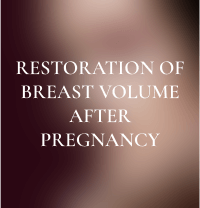breast augmentation

breast augmentation
Enhancing Your Confidence: The Journey of Breast Augmentation
In a world where self-confidence often plays a pivotal role in our personal and professional lives, the decision to undergo breast augmentation can be a significant step towards achieving the silhouette you desire.
Understanding Breast Augmentation
Breast augmentation, also known as augmentation mammoplasty, is a surgical procedure designed to enhance breast size and shape using implants or fat transfer techniques. It’s a deeply personal choice that many individuals make to improve their self-image and feel more comfortable in their own skin.
How Does BREAST AUGMENTATION SURGERY Help?
Breast augmentation is not just about enhancing physical appearance; it’s about boosting self-esteem and embracing your body with newfound confidence. Many individuals report feeling more comfortable in clothing, more confident in social settings, and overall happier with their appearance post-surgery.





Types of Breast Implants
Saline Implants: Filled with sterile saltwater after insertion, they require a smaller incision and allow for adjustments in size during surgery.
Silicone Implants: Filled with silicone gel, providing a more natural feel and contour but requiring a slightly larger incision for insertion.
Surgical Techniques
Incision Options: Typically made in the crease beneath the breast (inframammary), around the areola (periareolar), or in the armpit (transaxillary).
Placement: Implants can be positioned either beneath the chest muscle (submuscular) or directly behind the breast tissue (subglandular) or beneath the fascia (subfascial), depending on factors like existing breast tissue and desired outcomes.

Breast Fat grafting
Breast fat grafting, also known as autologous fat transfer to the breast, is a procedure where fat is harvested from one part of the patient’s body and injected into the breasts. This technique is used for breast augmentation or reconstruction and offers a natural alternative to implants.
Procedure Overview
Consultation and Planning: The surgeon and patient discuss goals, assess the suitability of the procedure, and identify areas from which fat can be harvested.
Harvesting: Fat is removed from donor sites like the abdomen, thighs, or flanks using liposuction. The procedure is often performed under local or general anesthesia.
Processing: The harvested fat is purified to remove any blood, oil, and other impurities. This process ensures that only healthy, viable fat cells are used for grafting.
Injection: The purified fat is carefully injected into the breast tissue. The surgeon uses a technique that evenly distributes the fat to achieve a natural look and feel.
Benefits
- Natural Look and Feel: Since the patient’s own fat is used, the results often look and feel more natural compared to implants.
- Dual Benefit: The procedure can simultaneously contour other parts of the body, like the abdomen or thighs, by removing excess fat.
- Minimal Scarring: The procedure involves only small incisions for liposuction and fat injection, leading to minimal scarring.
Considerations
- Volume Limitations: Fat grafting may not achieve the same volume increase as implants in a single session. Multiple procedures might be necessary for a significant size increase.
- Fat Absorption: Some of the transferred fat may be reabsorbed by the body over time, which can reduce the fullness of the breasts.
- Suitability: Ideal candidates are those with sufficient donor fat and realistic expectations about the outcomes.
Recovery
Recovery typically involves swelling and bruising in both the donor and recipient sites. Most patients can return to normal activities within a few weeks, but full recovery may take longer, and final results can take several months to become apparent.
Consultation with a board-certified plastic surgeon is crucial to determine if breast fat grafting is the right choice for you and to discuss potential risks and benefits.


